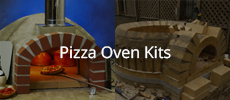Originally posted by Unofornaio
View Post
Ok I am not an expert am basically a newbie but I am a bit of a lateral thinker so I will put my 2 cents in. Once you have added extra footings support under your slab why not lay anoter layer of concrete blocks in a stretcher bond pattern and tie these into the outside wall with bolts/ rebar or something similar. You wont be able to do the internal wall all the way to the slab height but if you tie the 2 walls together wouldnt the internal wall act as support for the external wall ?
Just a thought but as I sai I am just a newbie.
Imran









 If you do not have a drill the rental of one and a masonry bit slightly larger than the all-thread is very cheap. You could do the OSB thing on the inside of the back wall and the brackets it wouldn't be quite as strong as the outside but would probably be sufficient.
If you do not have a drill the rental of one and a masonry bit slightly larger than the all-thread is very cheap. You could do the OSB thing on the inside of the back wall and the brackets it wouldn't be quite as strong as the outside but would probably be sufficient.
Leave a comment: